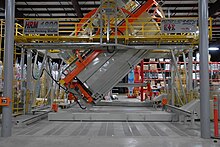Mold making is the process used to duplicate three dimensional models or objects. A model is any object that has depth, and an original model can be made from almost anything. If you were making your own object to mold, you might use clay, rock, or plastic. Through the use of a mold making material a negative, or a reverse, of a model part is made, the negative can then be used to cast a second part that is the same size and shape as the original part.
Simple parts such as relief sculptures can be duplicated by using a one part mold. The casting material is poured or pressed into the mold indentation. The casting material can range from clay, soap, chocolate, concrete, liquid plastic, play-dough, and metal castings.
You can make two part molds or even three or more part molds. Mold sizes can range from a few millimeters to many feet in size. Mold making is used in industry to make duplicates of a wide variety of creations ranging from car parts to Christmas ornaments. More complicated molds may include a variety of molded parts, rigid parts of the molds, inserts, a variety of resins and fillers, and a lot of setup and thought.
At home mold making is typically performed using a rubber mold making material that can be poured on or around the object to be duplicated. The mold can then be filled with casting materials of your choice. For example, many cake decorators or chocolate makers use molds to create unique shapes from their chocolates or use molds to shape fondant into special shapes. Home soap and candle makers duplicate unique shapes and designs. Hobbyist use molds to make components for their trains and to make improvements to the backdrops and sceneries. Even fishermen enjoy molding their own unique fishing lures.
Mold making can be fun and useful. With patience and persistence, you can mold and cast just about anything. You can make unique gifts and fix broken parts. To learn more about molding, casting and the products associated with Mold Making visit CNC Machining Factory
